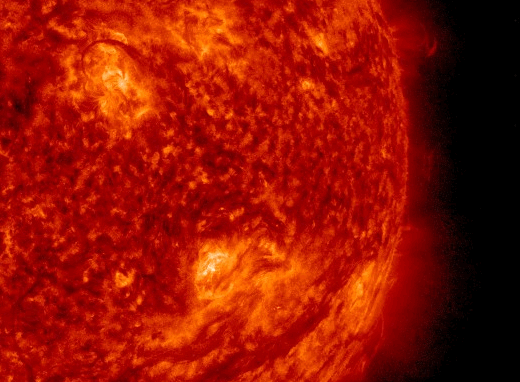Aug. 14, 2022: The sun just hurled a plume of cool, dark plasma into space following an explosion around sunspot AR3076. NASA’s Solar Dynamics Observatory recorded the blast on August 14th:

Traveling faster than 600 km/s (1.3 million mph), the plume tore through the sun’s outer atmosphere, creating a coronal mass ejection (CME). Coronagraph images from the Solar and Heliospheric Observatory (SOHO) confirm that the CME has an Earth-directed component. It could sideswipe Earth’s magnetic field on Aug. 18th, producing minor to moderate geomagnetic storms.
REVERSED POLARITY SUNSPOT: The sunspot that produced the dark plasma explosion is a little unusual. It has its signs backwards.

According to Hale’s Law, Solar Cycle 25 sunspots in the sun’s northern hemisphere should have a -/+ polarity; negative on the left, positive on the right. However, the magnetogram above shows the opposite. AR3076 is a reversed polarity sunspot.
Studies show that about 3% of all sunspots violate Hale’s Law. In many ways, reversed polarity sunspots are just like other sunspots. For instance, they have the same lifespan and tend to be about the same size as normal sunspots. In one key way they are different: According to a 1982 survey by Frances Tang of the Big Bear Solar Observatory, reversed polarity sunspots are more than twice as likely to develop complex magnetic fields mixing + and – together. Reversed polarity sunspots are therefore more likely to explode.
This one sure did, and a CME is now heading for Earth. Don’t miss the impact.
This story was brought to you by Spaceweather.com.